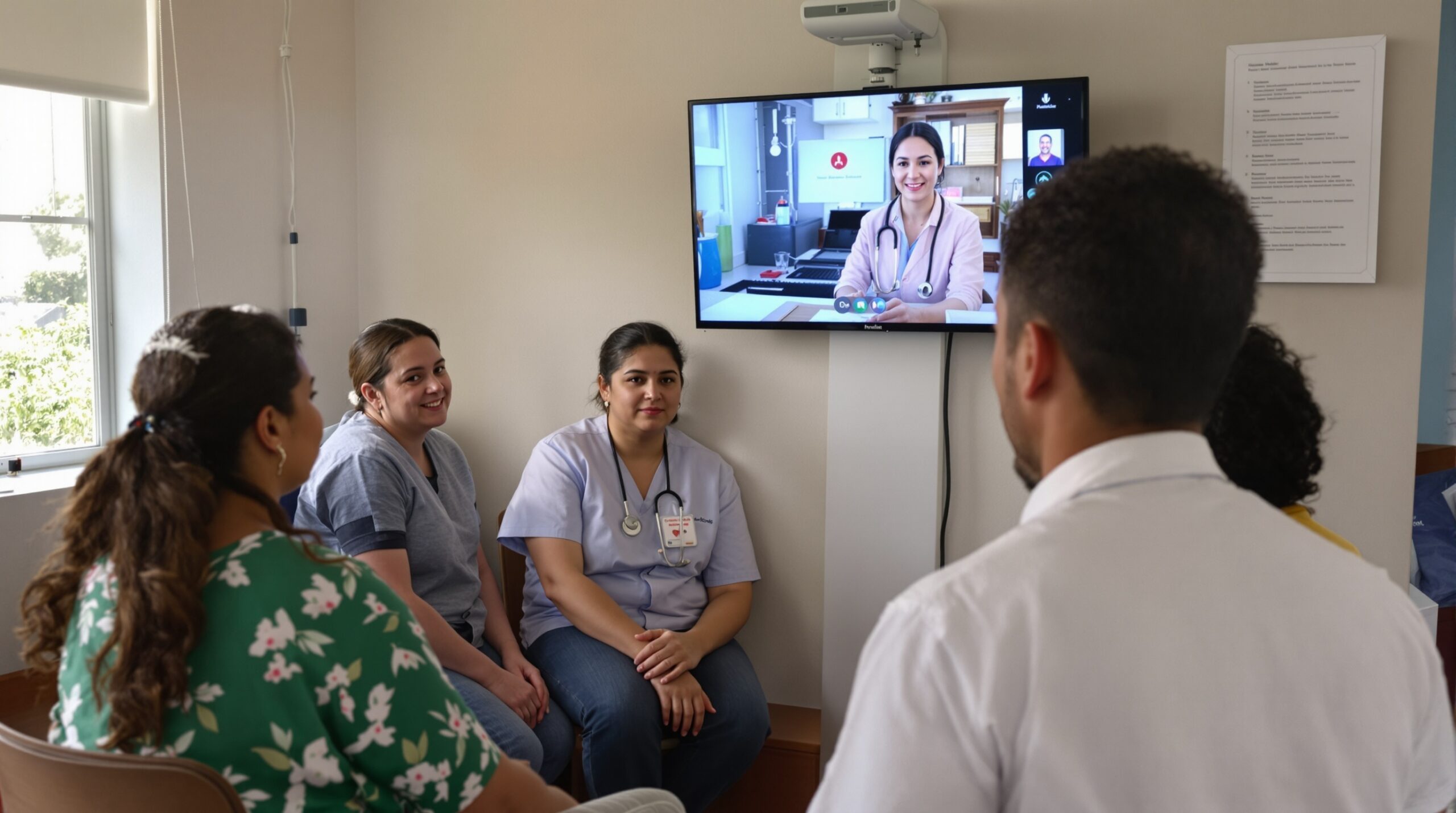Rural communities around the world face significant challenges in accessing quality healthcare services. Geographic isolation, limited transportation options, and shortages of healthcare professionals all contribute to these barriers. As a result, countless rural residents experience delayed diagnoses, inadequate follow-up care, and heightened health risks. The introduction of artificial intelligence (AI) integrated into telemedicine platforms offers a potential solution to these long-standing issues.
Understanding Telemedicine and AI Integration
Telemedicine uses technology to deliver clinical healthcare services remotely. This enables patients to consult with healthcare providers without needing in-person visits. Initially, telemedicine relied on simple two-way video calls, emails, and phone calls between patients and professionals.
The addition of AI in telemedicine takes remote care to a higher level of functionality and precision. AI algorithms analyze patient data, assist in triaging cases, and provide preliminary diagnoses during virtual visits. AI-supported systems can even monitor patient health indicators continuously, alerting staff when symptoms worsen or require urgent attention.
Improved Access for Rural Residents
Rural dwellers often must travel long distances to the nearest hospital or clinic, which can lead to missed appointments or unaddressed medical needs. AI-powered telemedicine sharply reduces these travel requirements. Patients can meet with specialists from their homes using smartphones or computers, bridging the rural-urban healthcare gap.
Telemedicine powered by AI features rapid diagnostic tools, which help healthcare professionals make quicker and more accurate decisions about care. When time is critical, such as during a stroke or cardiac event, swift responses can save lives. Thus, the integration of AI with telemedicine greatly enhances the capacity for prompt interventions in rural settings.
Enhancing Diagnostic Accuracy and Efficiency
AI systems can process large amounts of structured and unstructured data from electronic health records, imaging scans, and patient-reported symptoms. By recognizing patterns across thousands of cases, AI provides clinicians with critical insights. These systems can detect subtle signs of disease that the human eye might miss, facilitating earlier intervention.
This capacity for advanced diagnostics benefits rural clinics where specialized medical expertise is frequently unavailable. For example, an AI tool can analyze a patient’s chest X-ray onsite and flag suspicious abnormalities instantly. The local doctor then consults with a remote radiologist, improving speed and accuracy in diagnosis.
Addressing Healthcare Workforce Shortages
Rural areas often struggle to recruit and retain doctors, nurses, and specialists. This workforce shortage leaves gaps in primary and specialty care, forcing residents to delay or forgo important treatments. AI-powered telemedicine mitigates some of these shortages by allowing fewer providers to treat more patients efficiently.
Intelligent scheduling tools powered by AI can match patients with appropriate clinicians based on specialty, urgency, and availability. Similarly, AI chatbots handle preliminary screening, triage, and administrative tasks. This frees up physicians’ time for more complex cases and helps extend the reach of care teams.
Facilitating Continuous Care and Disease Management
Chronic diseases place a disproportionate burden on rural residents, who often face barriers in consistent disease management. AI-augmented telemedicine makes ongoing care much easier and more accessible for remote patients. Smart wearable devices paired with telemedicine apps continuously monitor health indicators like blood pressure, glucose, and oxygen saturation.
If a patient’s measurements fall outside of the safe range, the AI system automatically notifies healthcare staff. Adjustments to medication or lifestyle recommendations happen rapidly, often before health crises develop. These timely interventions can dramatically reduce hospitalizations and complications in rural populations.
Promoting Preventive Care and Health Education
Preventive medicine often ranks low among rural priorities due to limited resources and geographic barriers. AI-powered telemedicine flips this narrative by providing tailored reminders, self-care guidance, and educational materials directly to patients’ phones or computers. AI systems analyze individual risk factors to send personalized health prompts.
This encourages patients to schedule screenings, vaccinations, or wellness visits before health problems escalate. As a result, preventive care becomes woven into the fabric of rural health, helping communities stay healthier for longer periods.
Overcoming Connectivity and Device Barriers
Not all rural regions have robust broadband infrastructure or widespread smartphone access. This digital divide can hinder the full impact of AI-powered telemedicine. Innovative health systems have addressed these challenges by deploying community telemedicine kiosks or equipping local clinics with high-speed internet and shared devices.
Some AI-powered platforms function on lower-bandwidth connections, ensuring seamless consultations even with limited internet speeds. Grants and public-private partnerships continue to fund digital infrastructure improvements, further closing the healthcare access gap for rural communities.
Patient Privacy, Security, and Trust
Safeguarding patient data must remain a top priority in the rapid expansion of AI-driven telemedicine. Concerns over privacy and unauthorized access are common among rural populations. Transparent communication about data security measures helps build trust between patients and telemedicine providers.
AI systems used in telemedicine must comply with healthcare regulations such as HIPAA in the United States or GDPR in Europe. Regular audits and encryption protocols further protect sensitive medical information, ensuring patients’ confidence in new healthcare technologies.
Looking Ahead: The Future of Rural Healthcare
AI-powered telemedicine has already transformed healthcare delivery for many rural populations worldwide. As technology advances, new applications will continue to emerge, expanding the reach and benefits of remote care. Upcoming developments in natural language processing, image analysis, and personalized medicine promise even greater improvements in diagnosis and treatment.
Collaboration between governments, healthcare systems, businesses, and local communities will be vital in sustaining and scaling these innovative approaches. Ongoing investment in digital infrastructure and workforce training is essential, ensuring that rural residents reap the full benefits of AI-powered telemedicine.
Conclusion
AI-powered telemedicine has redefined what is possible in rural health access, diagnosis, and ongoing care. By breaking down geographic and logistical barriers, this transformative technology brings high-quality care directly to remote communities.
Embracing this innovative model can help close the rural healthcare gap and build healthier, more resilient populations for generations ahead.

